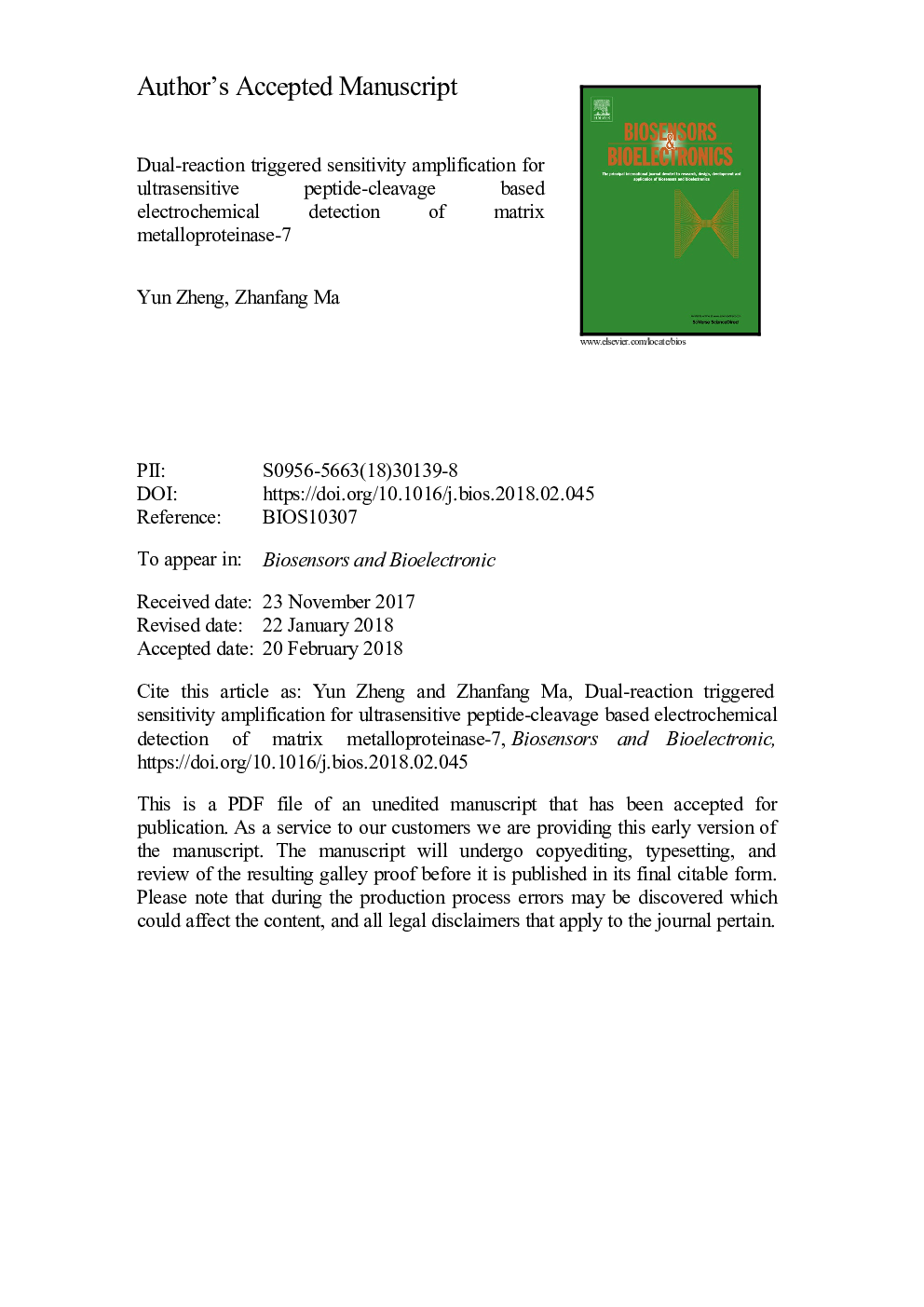| Article ID | Journal | Published Year | Pages | File Type |
|---|---|---|---|---|
| 7229566 | Biosensors and Bioelectronics | 2018 | 24 Pages |
Abstract
In this work, a new strategy of dual-reaction triggered sensitivity amplification for ultrasensitive electrochemical detection of matrix metalloproteinase-7 (MMP-7) was developed. The sensitivity of amperometric biosensor relies on the current signal differences (ÎI) caused by per unit concentration target. Benefited from dual-reaction catalytic activities of Pd nanoparticles, dual catalytic reactions were implemented in the biosensor to amplify the ÎI: (1) Fenton-like reaction was triggered by the probes to degrade redox species methylene blue; (2) catalytic precipitation reaction was followed subsequently to generate insoluble precipitation by 4-chloro-1-naphthol oxidation. Dual-enhancement of ÎI triggered by Pd nanoparticle-based catalytic probes significantly improved the detection performance of the biosensor. The peptide-cleavage based biosensor integrated Pd nanoparticle-based catalytic probes with reduced graphene oxide-Au/methylene blue-sodium alginate hydrogel (Au-rGO/MB-SA) nanocomposites substrate for ultrasensitive detection of MMP-7. Under optimal conditions, the proposed biosensor exhibited a wide linear range from 10â¯fgâ¯mLâ1 to 10â¯ngâ¯mLâ1 with an ultralow detection limit of 3.1â¯fgâ¯mLâ1. This strategy successfully combines the multiple catalytic reactions triggered by nanomaterials with peptide-cleavage pattern in electrochemical biosensor, providing a promising method for detection of other proteases.
Related Topics
Physical Sciences and Engineering
Chemistry
Analytical Chemistry
Authors
Yun Zheng, Zhanfang Ma,
